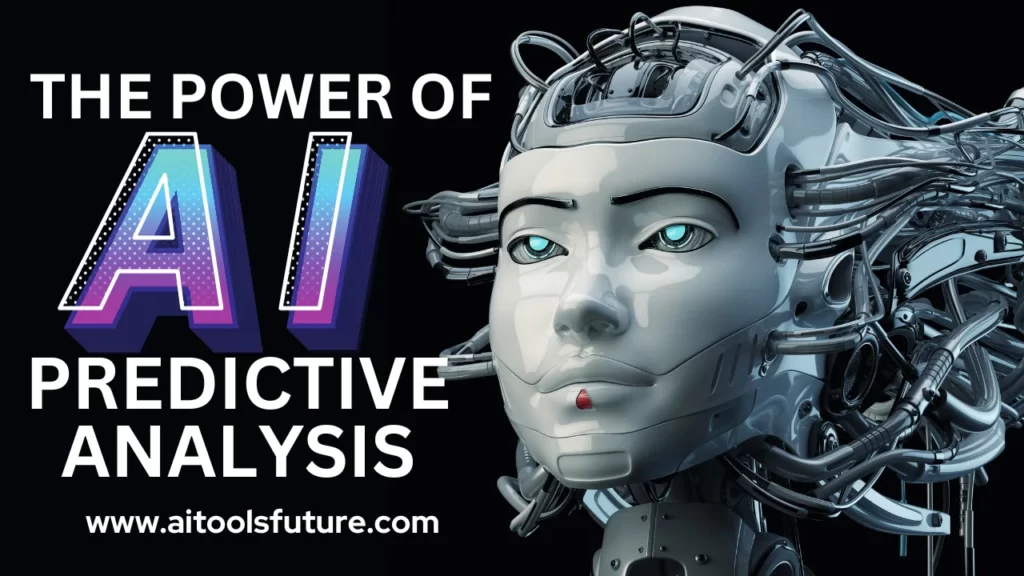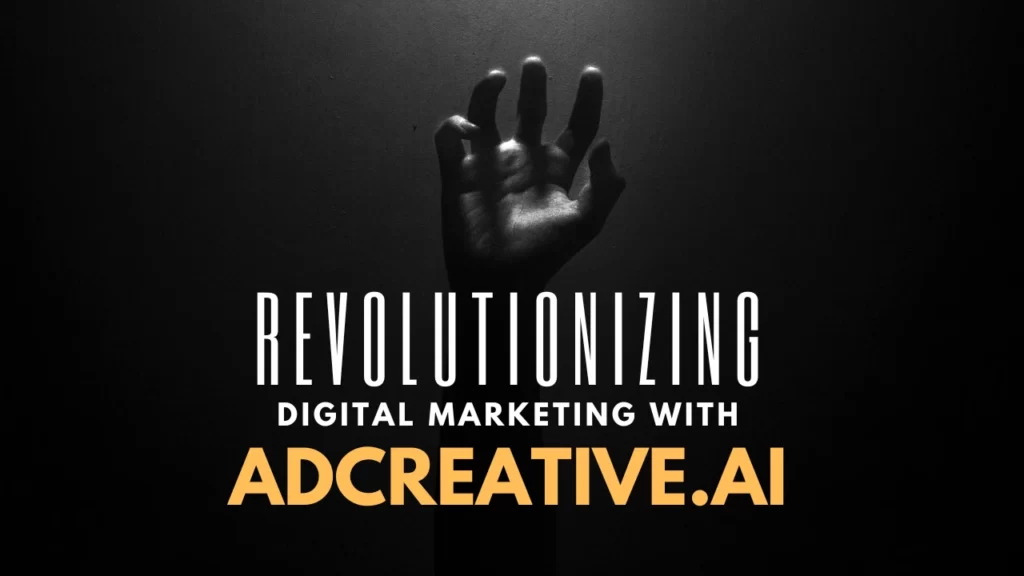In today’s data-driven world, it’s critical for businesses and organizations to stay ahead of the curve. The use of AI in Predictive analytics has become a game changer, enabling companies to predict trends, make informed decisions, and optimize their strategies. In this article, we will explore the world of AI tools for predictive analytics and how they can lead businesses into the future.
Understanding AI in Predictive Analytics
AI-powered predictive analytics is the use of artificial intelligence (AI) to analyze data and generate predictions about future outcomes. AI can be used to identify patterns and trends in data that would be difficult or impossible for humans to detect. This can help businesses and organizations to make better decisions and improve their performance.
AI in powered predictive analytics is used in a wide variety of industries, including healthcare, finance, retail, and manufacturing. For example, healthcare providers can use predictive analytics to identify patients who are at risk of developing certain diseases or conditions. Financial institutions can use predictive analytics to detect fraud and assess risk. Retailers can use predictive analytics to forecast demand and optimize inventory levels. Manufacturers can use predictive analytics to improve quality control and prevent machine breakdowns.
Predictive analytics uses historical and current data to predict future events or trends. It uses statistical algorithms and machine learning techniques to uncover hidden patterns and relationships in the data.
Data is Lifeblood of Predictive Analytics
Data is the lifeblood of predictive analytics. It can include different types of data, such as structured, unstructured, and semi-structured data. The quality and quantity of data are critical factors in the accuracy of predictions.
Business Value
Predictive analytics enables organizations to make data-driven decisions, reduce risk, increase operational efficiency, and gain a competitive advantage in the marketplace.
AI-Powered Predictive Tools
Machine learning algorithms
Machine learning is at the core of AI-powered predictive analytics. Algorithms such as regression analysis, decision trees, and neural networks can analyze data and make predictions with remarkable accuracy.
Natural Language Processing (NLP)
NLP techniques enable the analysis of unstructured text data, such as social media posts and customer reviews, to gauge sentiment and predict consumer trends.
Deep Learning
Deep learning, a subset of machine learning, uses multilayer neural networks to process complex data, making it well-suited for tasks such as image recognition and language translation.
Cross-Industry Applications
AI-powered predictive analytics is a powerful tool that can be used to improve decision-making and performance in a wide variety of industries. As AI technology continues to develop, we can expect to see even more innovative and impactful applications of predictive analytics in the future.
Financial Services
In the financial sector, AI-powered predictive analytics is used to detect fraud, assess risk, and make investment decisions. For example, banks can use predictive analytics to identify fraudulent transactions and credit card applications. Investment firms can use predictive analytics to identify stocks that are likely to outperform the market.
Healthcare
Predictive analytics helps in predicting diseases, patient outcomes, and optimizing resource allocation in hospitals. AI-powered predictive analytics is being used to identify patients who are at risk of developing certain diseases or conditions, such as cancer or heart disease. This information can be used to develop personalized prevention and treatment plans for these patients.
Marketing and Sales
Marketers use predictive analytics to identify potential customers, personalize marketing campaigns, and optimize pricing strategies.
Manufacturing
Manufacturers use predictive analytics to forecast equipment failures, optimize supply chains, and reduce downtime. AI-powered predictive analytics is being used to improve quality control and prevent machine breakdowns. For example, manufacturers can use predictive analytics to identify products that are likely to be defective and to take corrective action before they are shipped to customers.
Retail
AI-powered predictive analytics is being used to forecast demand and optimize inventory levels. For example, retailers can use predictive analytics to predict which products will be popular during certain times of the year and to ensure that they have enough stock on hand to meet those demands.
AI Tools in AI-powered Predictive Analytics
There are many AI tools that are available for AI-powered predictive analytics. The best tool for you will depend on your specific needs and budget. Some of these are :-
Google Cloud AutoML
Google Cloud AutoML is a machine learning platform that makes it easy for anyone to build and deploy predictive models, even if they don’t have any coding experience. AutoML offers a variety of pre-built models for common predictive tasks, such as forecasting, classification, and anomaly detection.

Microsoft Azure Machine Learning
Azure Machine Learning is a cloud-based machine learning platform that provides a variety of tools and services for building, deploying, and managing predictive models. Azure Machine Learning offers a wide range of pre-built models and algorithms, as well as the ability to create custom models.
Amazon SageMaker
SageMaker is a cloud-based machine learning platform that provides a variety of tools and services for building, training, and deploying predictive models. SageMaker offers a wide range of pre-built models and algorithms, as well as the ability to create custom models.
H2O.ai Driverless AI
Driverless AI is a machine learning platform that automatically builds and deploys predictive models. Driverless AI is designed to be used by both experts and non-experts, and it does not require any coding experience.
IBM SPSS Modeler
SPSS Modeler is a statistical analysis and machine learning platform that can be used to build and deploy predictive models. SPSS Modeler offers a wide range of pre-built models and algorithms, as well as the ability to create custom models.
In addition to the above, there are also a number of open-source AI tools that can be used for predictive analytics. Some popular open-source AI tools include:
scikit-learn
scikit-learn is a Python library that provides a wide range of machine-learning algorithms.
TensorFlow
TensorFlow is a popular open-source machine learning framework.
PyTorch
PyTorch is another popular open-source machine learning framework.
Open-source AI tools can be a good option for organizations that are on a budget or that need more flexibility in their machine-learning solutions. However, it is important to note that open-source AI tools can be more difficult to use than commercial AI tools, and they may require more expertise to implement and deploy.
The Road to Implementation
Data Collection and Preparation
The first step is to collect relevant data from various sources and ensure that it is clean, complete, and well-structured.
Model Development
Data scientists and analysts use AI algorithms to create predictive models and tune them for accuracy.
Testing and Validation
Models are rigorously tested and validated against historical data to ensure their reliability.
Deployment and Monitoring
After validation, the models are deployed in production systems and continuously monitored for performance.
Advantages and Challenges
Advantages of AI-powered Predictive Analysis
Better decision-making, increased customer satisfaction, streamlined operations, and competitive advantage are just a few of the benefits.
Challenges of AI-powered predictive analytics
Challenges include the need for high-quality data, algorithm complexity, and the need for skilled data scientists to develop and maintain predictive models.
Recommended Reading:
Unlocking the Power of Predictive Analytics
AI in Marketing Strategies for Success in Business
The Future of Predictive Analytics
AI tools for predictive analytics are not static; they are constantly evolving. As AI technologies advance, the accuracy and capabilities of predictive analytics will continue to improve. Companies that deploy these tools and leverage the insights gained from predictive analytics are well-positioned to succeed in an increasingly competitive environment. Whether you are in finance, healthcare, marketing, or any other industry, leveraging AI-powered predictive analytics is key to staying ahead and succeeding in the data-driven future.



